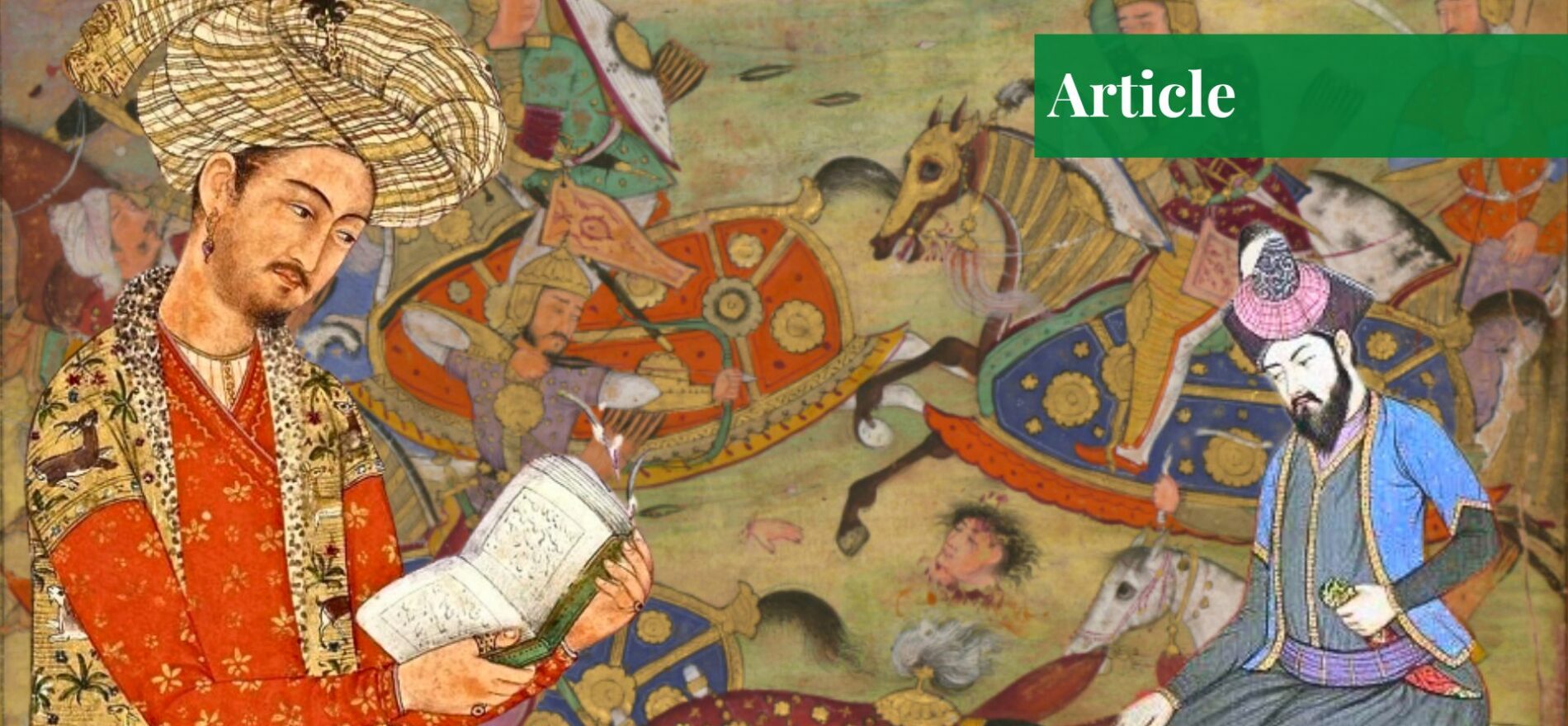Haniya Ali is pursuing her Bachelor's in Government and Public Policy from National Defence University, Islamabad.
Background
By the early 16th century, with the aim of expanding his territory, Babur set his sights on the rich and fertile plains of Northern India. Since Punjab was originally a part of his dominion, his main objective up to 1524 was to finish the legacy of his ancestor Timur.
Most of North India was under Ibrahim Lodi’s control at the time, but the Lodi dynasty was in chaos and there were several defections. Ibrahim’s uncle Ala-ud-Din and the governor of Punjab, Daulat Khan Lodi, both invited him. He sent an emissary to Ibrahim, where he claimed to be the rightful heir, but the emissary was detained in Lahore and released many months later.

In 1524, Babur set out for Lahore, Punjab, but discovered that Ibrahim Lodi’s soldiers had driven away Daulat Khan Lodi. Babur set Lahore on fire for two days before marching to Dipalpur and installing Alam Khan, another Lodi rebel uncle, as governor. Alam Khan was ousted quite soon and escaped to Kabul.
Babur responded by providing troops to Alam Khan, who eventually teamed up with Daulat Khan Lodi and, with the help of roughly 30,000 soldiers, besieged Ibrahim Lodi at Delhi.
The Famous Battlefield: Panipat
Panipat, strategically located in modern-day Haryana, was a favorite place for wars because its strategic location along the Yamuna River’s banks made it the perfect spot for the transportation of troops and supplies. It was situated on a wide-open plain, which made it the perfect place for significant fights. The Grand Trunk Road, which served as the primary commerce route between North India and Central Asia, is also where it is situated.

Panipat’s political importance was another factor in the decision to use it as the battleground. North India was split up into several minor kingdoms that were continually striving for dominance during the medieval era. At the intersection of numerous significant kingdoms, including Delhi, Agra, and Jaipur, stood Panipat.
Additionally, Panipat was seen as a safe haven by the numerous groups vying for dominance in the area. Its remote location made it less susceptible to political pressure because it was removed from the other kingdoms’ political hotspots.
The Battle
Around 100,000 warriors, including infantry, cavalry, and war elephants, made up Ibrahim Lodi’s strong army. On the opposing side, Babur commanded an army of about 20,000 trained and battle-hardened warriors, including expert cavalry, gunners, and archers which clashed on the flat lands of Panipat on the day of 21st April 1526.

The first Battle of Panipat was fierce and brutal, with both sides displaying their military powers. Babur, with his artillery and experienced army, gained an initial advantage by inflicting heavy casualties on the Lodi forces. However, Ibrahim Lodi’s war elephants initially disrupted Babur’s formations, causing momentary chaos.
Sultan Ibrahim personally led a second army into battle and took up a position at Panipat, to the north of Delhi, after his army routed the Afghan force that had marched out to meet it. Babur was able to solidify his position even more as the days went by and a reluctant Sultan Ibrahim postponed his attack. The first Battle of Panipat resulted in casualties of 20,000 to 50,000 Afghans while the deaths of Mughals are still unknown.
Babur’s Military Strategies and the Turning Point
Babur’s new strategies, like the Tulghuma and the Araba, helped him prevail in the fight. The goal of the Tulghuma strategy was to divide the entire army into small units and deploy them on the flanks. Araba referred to rows of numerous, rope-bound wagons that were positioned with their backs to the adversary. The flanking units were further separated by Babur into forward and rear divisions.
Babur divided his army into formations in order to surround the enemy from all sides because he was aware that his army was not very large. Mantlets were used to support, protect, and position cannons behind the carts so they could be moved around with ease. Both these strategies made Babur’s artillery deadly. The heavy cannons could be moved via the wheeled mantlets, which allowed them to alter course for new targets.

In a critical turn of events, Babur’s clever strategy to lure the Lodi forces into a trap eventually resulted in the loss of Ibrahim’s life on the battlefield. During the fierce, hand-on-hand fight, the death of their leader shattered the morale of the Lodi forces, leading to their eventual defeat.
Conclusion
In the history of the subcontinent, the first Battle of Panipat marked an epoch. With Babur’s conquest, the Mughal Empire’s control over the subcontinent officially started and lasted for more than three centuries. The conflict also highlighted the tactical value of guns and artillery, which encouraged the widespread use of these weapons in Indian combat.
With Babur’s conquest, a new dynasty was established, at a time of brilliant artistic production and political stability. Additionally, it brought Central Asian influences to the Indian subcontinent, changing the landscape of its culture and architecture. When looked through the lens of military development, the battle of Panipat marks the start of the gunpowder age and the end of the age of elephants as the prime weapon of Indian warfare.
If you want to submit your articles, research papers, and book reviews, please check the Submissions page.
The views and opinions expressed in this article/paper are the author’s own and do not necessarily reflect the editorial position of Paradigm Shift.



















